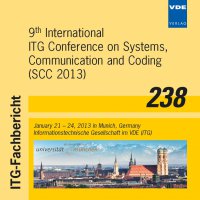Protection of Cell-Edge Users in Wireless Systems by Using Almost Blank Subframes
Konferenz: SCC 2013 - 9th International ITG Conference on Systems, Communication and Coding
21.01.2013 - 24.01.2013 in München, Deutschland
Tagungsband: SCC 2013
Seiten: 6Sprache: EnglischTyp: PDF
Persönliche VDE-Mitglieder erhalten auf diesen Artikel 10% Rabatt
Autoren:
Uygungelen, Serkan; Taoka, Hidekazu; Bharucha, Zubin (DOCOMO Euro-Labs, Munich, Germany)
Bauch, Gerhard (DOCOMO Euro-Labs, Munich, Germany )
Inhalt:
In long term evolution (LTE) networks, resource assignment for user data can be adapted in the frequency domain so as to exploit multi-user and frequency diversity properties of the wireless channel. In order to enable this, every data transmission is preceded by a control region where the location of the data reserved for each user is indicated. Since the control channels typically spans the entire bandwidth, for densely deployed networks, there is a high probability that base stations (BSs) destructively interfere with one another causing cell-edge users to go into outage. LTE also has the property of almost blank subframe (ABS) which allows for time domain interference mitigation by muting interfering BSs during certain predefined subframes. Based on this feature, we develop a method known as dynamic subframe assignment (DSA) to protect control channels. We believe that this method is suited for future uncoordinated and densely deployed networks. The proposed method is designed such that each BS proactively protects the control channels reserved for its own users. Additionally, the interference protection does not coincide with an intolerable reduction in the attainable spatial reuse of radio resources. The effectiveness of our proposal is corroborated via system-level simulations which reveal that cell outage ratios are significantly decreased without increasing the complexity at user terminals or BSs.


